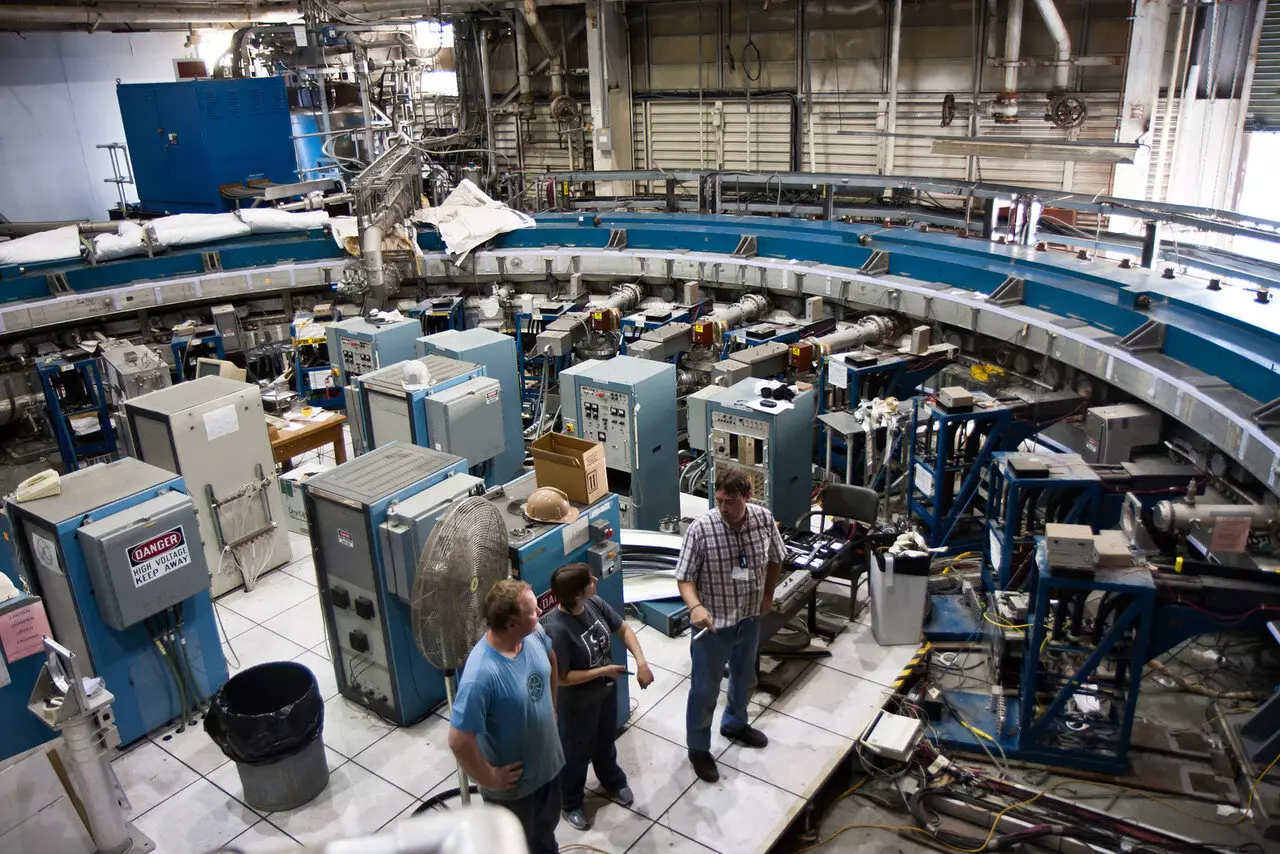Recent advancements in particle physics have brought forth intriguing revelations about the muon, a subatomic particle often dubbed a “heavy electron.” These particles, weighing approximately 207 times more than electrons, carry identical electric charge and spin characteristics but reside at the forefront of scientific exploration. The breakthrough achievements in measuring the muon’s magnetic moment showcase the persistent quest for precision in understanding fundamental particles and the forces governing the universe.
A dedicated worldwide effort led by the Muon g-2 Collaboration, comprised of 181 scientists representing seven countries and 33 institutions, has resulted in a meticulous measurement of the muon’s “anomalous magnetic moment,” a value that sheds light on theoretical predictions surrounding particle interactions. This enhanced precision, boasting an accuracy of 0.2 parts per million, occurs within the framework of ongoing experiments at Fermilab, a premier particle physics laboratory in the United States.
The experimental design employed by the Muon g-2 Collaboration is both sophisticated and innovative. By cycling muons in a storage ring designed to replicate conditions nearing the speed of light, scientists achieve extraordinary levels of interaction with an external magnetic field that is roughly 30,000 times stronger than Earth’s. The storage ring, with a diameter of 7.1 meters, allows for the observation of muons precessing around their spin axis, akin to tops spinning in motion. This precession is produced by the influence of the muon’s own magnetic moment interacting with virtual particles in a vacuum.
The technique yields insights into the muon’s behavior when subjected to an external magnetic field, allowing researchers to compare the precession frequency of the muons with the cycling frequency within the ring. This groundbreaking methodology, which follows similar experiments initiated back in 2006, marks a significant advancement in precision measurements—2.2 times better than previous assessments conducted by the same collaborative team.
Bridging Theoretical Framework with Empirical Data
A crucial aspect of this ongoing research is the interplay between theoretical frameworks and empirical data. The theoretical predictions concerning the muon’s magnetic moment extensively rely on Quantum Electrodynamics (QED), a well-established quantum field theory. The accurate estimation of the muon’s properties necessitates complex calculations involving thousands of Feynman diagrams, elucidating various interactions. This meticulous work was exemplified by pioneers like Julian Schwinger, who, in 1948, famously calculated the first correction for the electron’s magnetic moment.
However, while the electron’s magnetic moment has been quantified to an impressive 11 significant digits, the muon presents additional layers of complexity. Contributions from electroweak theory and hadronic effects complicate predictions, underscoring the need for advanced computational techniques to quantify vacuum fluctuations among strongly interacting particles. In the current context, the significant challenge arises from accurately determining the hadronic contributions, specifically through hadronic vacuum polarization and light-by-light scattering phenomena.
The precision measurements of the muon magnetic moment are not merely academic exercises; they symbolize a deeper quest to explore the limits of the Standard Model. This theoretical framework describes the fundamental aspects of particle physics but leaves room for potential new physics that could explain unexplained phenomena. With the muon displaying a sensitivity to new particles approximately 43,000 times greater than the electron, it is an ideal candidate for probing beyond the existing theoretical boundaries.
Possibilities for new physics include concepts like supersymmetry and string theory, which propose extensions to the known Standard Model. Currently observed inconsistent data between different experiments necessitate further exploration. Notably, while recent measurements have significantly improved precision, inconsistencies in hadronic effect corrections limit the ability to directly correlate experimental findings with theoretical predictions.
The pursuit of knowledge surrounding the muon is ongoing, with expectations for enhanced statistical precision as the collaboration analyzes additional data sets. The experiments over the coming years will potentially yield advancements that exacerbate our understanding of the muon and offer possibilities to confirm or refute aspects of theoretical predictions. By tackling challenges inherent in the interplay of experiment and theory, researchers hope to refine measurements and possibly uncover deeper truths about the universe.
The pioneering work on the muon’s magnetic moment represents a critical intersection of theoretical physics and empirical observation. This nascent knowledge forms a cornerstone of contemporary particle physics, forging new pathways as scientists strive to unravel the complexities of the universe’s fundamental structure. Each new discovery invites further inquiry, pushing the boundaries of scientific understanding ever forward.


Leave a Reply